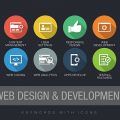The process of developing a mobile app is not difficult if you know what to do and what not to do. First, define your tech stack strategy. Then, you need to choose code architecture. There are three main types of software development methodologies: waterfall, agile, and scrum. Each one includes planning, development, and testing. Here are the steps involved in creating an app. To avoid confusion, here are some common mistakes that developers make.
You need to decide on the development technology that will be used to build your mobile app. You can use Java, React Native, Flutter, or Kotlin for iOS applications. It is important to understand the advantages and disadvantages of each programming language so that you can make an informed decision. The most important phase of any program is quality checking. Quality checking ensures stability, security, and usability. Test cases are designed for each feature, and you can create them manually or with a tool.
During the analysis phase, you will need to define your audience and define what your app will be used for. Once you have defined the ‘value proposition’, you can work on the design of the mobile app. Next, you will need to define your audience. Determine who your audience is and what they want from your product. You can do this by testing your app with a number of users. Then, you can select your technical stack libraries and start coding.
After defining your app’s goals and your target audience, the next step is to develop the app. You need to create a wireframe, which is like a sketch of your mobile application. It will help you visualize how the finished product will look and function. Once you have the wireframe, UI/UX designers will give it a look. If you have a great idea for your app, this step will make it easy for the team to create a high-quality product.
Aside from the design, the developer will also need to consider the user experience. During the development process, your users will need to use the app. It will be important to make them feel comfortable with the app’s user interface. You should also consider the user’s experience when developing the mobile app. This will determine whether or not it will be successful. A good app has an excellent user experience.
After defining your app’s goals, UI design is the next step. In order to create a functional and appealing application, you need to have a long-standing strategy and a comprehensive list of functional requirements. A product roadmap is a visual representation of your mobile app development company strategy and outlines the key points of the project. To make the most of your investment, you need to ensure that the initial launch is successful.
Once you’ve defined your idea and wire framed the app’s functionality, you need to set up the framework. Once you’ve done that, it’s time to create the final app. This process is divided into three steps. The first step is the design. After this, you need to develop the UI/UX. UI/UX is the core of any mobile app. Without the right UI/UX, your app will be unusable.
Once you have a concept for your mobile app, you need to develop its frontend. The frontend of an app is the most important part of the product. It’s important to define it thoroughly and understand your target audience. You’ll also need to identify your skills. There are different development technology stacks for Android and iOS. When you have a product roadmap, you should hire developers with expertise in both platforms.
Before moving on to the actual development of your mobile app, you need to define the requirements of the app. You’ll need to collaborate with experts in UI/UX design, web development, and more. The size of your team depends on how complicated the project is. In addition to designing the user interface, you should also consider the operating system. You’ll also need to select a platform for your mobile application.
































No Comments